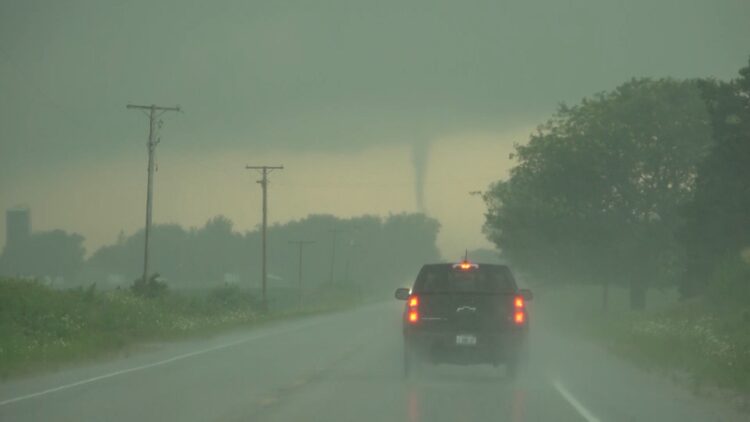Texas historically averages 137 tornadoes each year, according to the National Weather Service. By the end of June, the state had already experienced 124 tornadoes in 2024.

How to drive safely in any kind of severe weather
Meteorologist Tony Laubach offers tips on how to drive safely when tornadoes, high winds, hail or flooding threaten your drive.
With half of 2024 still remaining, the United States has already surpassed the average yearly tornado count, while Texas has fallen just short of its annual average.
In a stronger-than-normal tornado season, the United States recorded 1,282 tornadoes through the end of June, according to data from the National Oceanic and Atmospheric Administration’s Storm Prediction Center.
Since 2013, the nation has seen between 886 and 1,517 tornadoes each year, averaging around 1,194 annually over a 10-year span.
More: ‘Potentially catastrophic’ Hurricane Beryl poised for landfall. Will it impact Texas?
How many tornadoes have hit Texas?
Texas also recorded high numbers in 2024, with 124 tornadoes in the first half of the year. Historically, the state averages 137 tornadoes each year, according to the National Weather Service.
This year, Texas has been at the front end of several tornado outbreaks.
During the last weekend of April, the local National Weather Service office identified 14 tornadoes within a 24-hour span in Central and East Texas. None resulted in injury or fatality, although the same outbreak had formed several deadly tornadoes in Oklahoma and Iowa.
Additionally, a series of tornadoes formed over Memorial Day weekend in North Texas and claimed at least seven lives and injured more than 100 in Valley View.
More: Tornado activity is increasing in Texas. Avoid believing these 6 myths for your safety
How are tornadoes formed?
At the root, tornadoes form when the weather has featured all the right ingredients: large amounts of water vapor and vertical wind shear, which is essentially “how winds change speed and direction in height.”
This often happens in the eastern half of the U.S. when dry winds coming in from high over the Rockies meet moisture-rich, low-level winds coming from the Gulf of Mexico, according to USA TODAY.
Where is tornado alley?
From the 1950s to the 1990s, tornadoes have primarily touched down in the states centered along the 100th Meridian (or the 100-degree west longitude line) from South Dakota to Texas — otherwise dubbed “Tornado Alley.”
In the past decade, however, the dryline has shifted eastward by about 200 miles, ramping up tornado activity over a large portion of the Midwest and Southeast. This includes the lesser-known tornado-prone region formerly called “Dixie Alley,” which is distinct because its outbreaks are often more destructive and deadly. (Note: The Weather Channel has abandoned the term citing racial insensitivity, but a new term does not yet exist.)
This region stretches from eastern Texas and central Arkansas to Georgia and reaches as far north as southwestern Kentucky, southeastern Missouri and Tennessee.
Which state gets the most tornadoes?
Here are the top 10 states with the most tornadoes per year, according to 1997-2021 averages:
TexasKansasOklahomaIllinoisAlabamaMississippi (tie) / Iowa (tie)FloridaNebraskaMissouriInteractive map shows history of tornadoes in Texas since 1950
The National Oceanic and Atmospheric Administration has been tracking tornadoes for decades.
Our interactive map, which contains data from January 1950 to July 31, 2023, pinpoints where a cyclone touched down and traces its path of destruction.
Source link : https://www.statesman.com/story/news/state/2024/07/01/texas-tornadoes-annual-average-june-2024/74268943007/
Author :
Publish date : 2024-07-01 12:56:13
Copyright for syndicated content belongs to the linked Source.